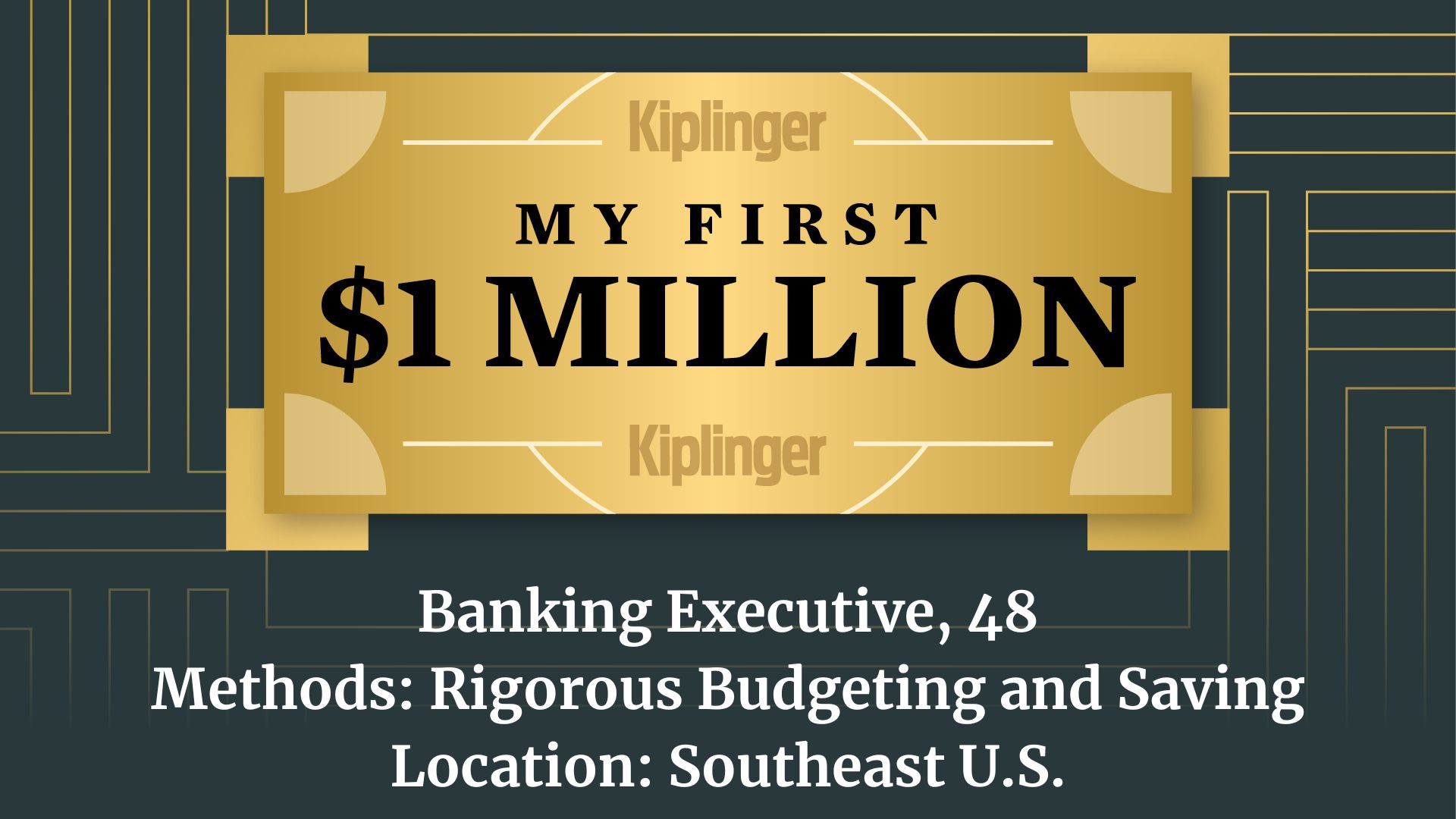Five Ways to Adapt Your Charitable Giving Strategy in a Changing World: An Expert Guide
Economic uncertainty, global events and increasing wealth are shaping the charitable landscape this year. Here are the philanthropic trends and some tips that could help affluent donors optimize their impact.

Economic uncertainty, geopolitical instability, extreme weather events and the accrual of significant wealth have affected the course of charitable giving in 2025.
As we head into fall, here are five discernable philanthropy trends to watch, coupled with tips to optimize your philanthropic impact.
1. Donations will likely track stock market and economic performance
A recent report on charitable donations from Giving USA affirms the historical connection between the stock market, the performance of the broader economy and charitable giving.
From just $107.88 $24.99 for Kiplinger Personal Finance
Become a smarter, better informed investor. Subscribe from just $107.88 $24.99, plus get up to 4 Special Issues

Sign up for Kiplinger’s Free Newsletters
Profit and prosper with the best of expert advice on investing, taxes, retirement, personal finance and more - straight to your e-mail.
Profit and prosper with the best of expert advice - straight to your e-mail.
"Individuals, bequests, foundations and corporations gave an estimated $592.50 billion to U.S. charities in 2024," the report says. "Total giving grew 6.3% in current dollars, reaching a new high by that measure (3.3% when adjusted for inflation).
"A strong stock market and GDP growth helped fuel the increase in total giving, which was led by individual and corporate giving."
The Kiplinger Building Wealth program handpicks financial advisers and business owners from around the world to share retirement, estate planning and tax strategies to preserve and grow your wealth. These experts, who never pay for inclusion on the site, include professional wealth managers, fiduciary financial planners, CPAs and lawyers. Most of them have certifications including CFP®, ChFC®, IAR, AIF®, CDFA® and more, and their stellar records can be checked through the SEC or FINRA.
Given this trend, a year that closes with a strong market performance would likely yield a high level of charitable giving.
Donors can prepare for this by consulting with their investment and tax advisers to earmark the optimal marketable securities to donate.
2. Donors have an increased desire to see their gifts' impact
As donors live longer, more wish to see the impact of their giving during their lifetimes, rather than leaving a bequest after death.
After providing for heirs, affluent donors increasingly view charity as a major beneficiary. This desire for current gratification and engagement has inspired donors to make meaningful gifts while they can still connect with the charities they support.
In addition, donors expecting a significant balance in their charitable vehicles upon death increasingly choose to spend down such funds to prevent future mission drift.
The inclination to accelerate giving also extends to younger generations. Newer philanthropists who have either inherited or realized significant wealth similarly wish to effect positive change sooner rather than later, especially in light of environmental and civic concerns.
At the same time, the nonprofit sector continues to struggle with greater demand for services and severely reduced government support.
3. Greater need for succession planning
As parents and grandparents age, they often wish to continue the philanthropic tradition they've started, ideally through their children and grandchildren.
With private foundations and donor-advised funds (DAFs) come the opportunity and challenge of putting these vehicles into the hands of the next generation.
Successful transitions entail a sufficient runway and planning horizon to clarify the philanthropic framework for passing the baton of charitable decision-making.
If you seek to engage your children in a common philanthropic journey, these questions can help you craft a framework to chart the future:
- How do you want your children involved in family philanthropy?
- What does success look like?
- Which family members do you wish to include in your philanthropic decision-making?
- Which causes matter most to you?
- What problems would you want to tackle as a family?
- What flexibility would you want your descendants to have over the foundation's or DAF's grants?
4. Utilizing DAFs for discretion and preliquidity planning
Donor anonymity and the ability to accept complex assets by DAFs render these vehicles a core component of an affluent donor's charitable planning.
As the cultural climate becomes more controversial, affluent donors seek privacy for themselves and their families to avoid unwanted solicitations and prevent public scrutiny, especially when addressing sensitive issues.
As a planning consideration, DAFs enable donors to give anonymously, enabling them to maintain discretion around their philanthropy.
Interests in either privately held or publicly traded companies might constitute one of the most valuable assets owned by high-net-worth individuals.
- While the early growth stage of a company reflects an optimal time to transfer wealth to family members (or vehicles for their benefit), assets that have risen in value become more attractive for charitable giving.
- Donors typically reduce their tax liabilities by donating some or all of their after-tax proceeds to charity. However, an additional benefit lies in donating long-term appreciated capital assets before a liquidity event. Doing so not only yields a charitable deduction, but also a reduction in capital gains tax exposure.
- With careful planning, the donor would not recognize any capital gains on the charity's subsequent sale of the donated asset. Donors should consult with counsel to review opportunities for their particular tax profile and any risks of a potential anticipatory assignment of income.
5. Complementing charitable giving with political advocacy
Recent election cycles and the impact of elected officials on critical issues have heightened the awareness of many philanthropists of the ability to effect change through civic and political engagement, as well as charitable donations.
Section 501(c)(4) organizations have emerged as a structure for those who wish to engage in certain forms of advocacy that are more challenging, or prohibited, for charitable 501(c)(3) organizations.
Section 501(c)(3) organizations by law cannot support or oppose candidates for elected public office and must only engage in nonpartisan advocacy.
On the other hand, 501(c)(4)s can engage in some partisan activity (but partisan political activity cannot be the primary purpose of a 501(c)(4) organization).
Like charitable 501(c)(3) organizations, 501(c)(4) entities are tax-exempt. However, unlike charitable donations, contributions to 501(c)(4) entities are not income-tax-deductible.
Funders of 501(c)(4) entities must comply with both federal and state laws, and would need to consult with counsel to fully understand their options for achieving their desired community and societal impact.
Looking for expert tips to grow and preserve your wealth? Sign up for Building Wealth, our free, twice-weekly newsletter.
Deploying significant philanthropic capital quickly and effectively can feel like a daunting task. Fortunately, you can support causes through certain steps, including:
Review with your tax adviser the maximum amount that you can deduct this year, based on your total anticipated adjusted gross income (AGI) for 2025.
- Itemized deductions of cash to public charities remain limited to 60% of AGI each year, compared with the 30% of AGI limit for donations of long-term appreciated capital gain property to public charities.
- Donating long-term appreciated marketable securities might provide for greater tax efficiency, however, so reviewing the optimal assets to donate remains critical for optimal tax planning.
- You can carry forward the excess deduction to the subsequent five tax years. If you choose to donate more than you can ultimately deduct, having this framework in mind can inform your charitable budget for current and future years.
Within your desired charitable budget, consider increasing funding to charities you have been happy to support. Given the likelihood of greater need for the services these charities provide, you can increase your impact accordingly by further funding the work that you've already observed.
Prioritize general operating support, as opposed to restricted funding for specific projects. General operating support enables charities to respond to emergencies and quickly pivot to the greatest needs as they arise. It also can strengthen the charity in the long run by investing in much-needed technology, strategic planning or other long-term needs.
Consider multiyear grants to provide charities some fiscal stability and the ability to metabolize capital at a more manageable rate. Funding over several years can also enable charities to respond to ever-evolving challenges posed by eternal factors.
Consider intermediary organizations that research effective organizations in your areas of interest. You can leverage their information and networks to expedite your own due diligence in identifying charities already making an impact in the areas you care most about.
Giving Compass, The Center for High Impact Philanthropy and other charitable research platforms can help identify such organizations, based on the specific issues you search for within their websites.
Conclusion
In 2025, affluent donors face a dynamic philanthropic landscape shaped by economic uncertainty, global instability and rising needs.
Giving will likely mirror market performance, so plan charitable gifts with your tax adviser to maximize deductions — especially by donating appreciated securities or using donor-advised funds for privacy and flexibility.
Donors increasingly seek to give while living, engage family in succession planning and support charities with general operating grants and multiyear commitments. Political advocacy is also gaining traction, though it requires special legal consideration.
Plan now to make an impact on the areas you value and prioritize.
Related Content
- Developing a Charitable Giving Strategy: Where to Begin
- How to Assess the Impact of Your Charitable Giving
- Three Charitable Giving Strategies for High-Net-Worth Individuals
- What Can a Donor-Advised Fund Do for You? (A Lot)
- In Family Philanthropy, Embracing Differences Can Pay Off
Profit and prosper with the best of Kiplinger's advice on investing, taxes, retirement, personal finance and much more. Delivered daily. Enter your email in the box and click Sign Me Up.

As Head of Philanthropy & Family Governance Advisory, NB Private Wealth, a division of Neuberger Berman, Julia guides family members in proactively navigating their future and philanthropic journey together. Common topics covered with significant families include wealth communication and disclosure, succession planning and post-liquidity governance in determining a new common framework for the family and its wealth. Julia has lectured widely in the areas of philanthropy and family governance, with her perspective featured in The New York Times, Forbes, the Financial Times and Barron’s. Julia has authored articles for Trusts and Estates magazine and the Leimberg Estate Planning Newsletter and regularly speaks on charitable giving.
-
 CD Maturing Soon? Here's What to Do Next
CD Maturing Soon? Here's What to Do NextThese strategies of what to do when you have a CD maturing soon will have you maximizing returns even with rate cuts.
-
 How to Make 2026 Your Best Year Yet for Retirement Savings
How to Make 2026 Your Best Year Yet for Retirement SavingsMake 2026 the year you stop coasting and start supercharging your retirement savings.
-
 You Saved for Retirement: 4 Pressing FAQs Now
You Saved for Retirement: 4 Pressing FAQs NowSaving for retirement is just one step. Now, you have to figure out how to spend and maintain funds. Here are four frequently asked questions at this stage.
-
 Do You Have a CD Maturing Soon? Here's What to Do Next
Do You Have a CD Maturing Soon? Here's What to Do NextThese strategies of what to do when you have a CD maturing soon will have you maximizing returns even with rate cuts.
-
 I'm a Financial Planning Pro: This Is How You Can Stop These 5 Risks From Wrecking Your Retirement
I'm a Financial Planning Pro: This Is How You Can Stop These 5 Risks From Wrecking Your RetirementYour retirement could be jeopardized if you ignore the risks you'll face later in life. From inflation to market volatility, here's what to prepare for.
-
 Are You Hesitating to Spend Money You've Spent Years Saving? Here's How to Get Over It, From a Financial Adviser
Are You Hesitating to Spend Money You've Spent Years Saving? Here's How to Get Over It, From a Financial AdviserEven when your financial plan says you're ready for a big move, it's normal to hesitate — but haven't you earned the right to trust your plan (and yourself)?
-
 How to Open and Maintain an Online Savings Account Safely
How to Open and Maintain an Online Savings Account SafelyOnline banks offer generous APYs that most brick-and-mortar banks can't match. If you want to make the switch to online but have been hesitant, I'll show you how to do it safely.
-
 My First $1 Million: Banking Executive, 48, Southeast U.S.
My First $1 Million: Banking Executive, 48, Southeast U.S.Ever wonder how someone who's made a million dollars or more did it? Kiplinger's My First $1 Million series uncovers the answers.
-
 Time to Close the Books on 2025: Don't Start the New Year Without First Making These Money Moves
Time to Close the Books on 2025: Don't Start the New Year Without First Making These Money MovesAs 2025 draws to a close, take time to review your finances, maximize tax efficiency and align your goals for 2026 with the changing financial landscape.
-
 Is Fear Blocking Your Desire to Retire Abroad? What to Know to Turn Fear Into Freedom
Is Fear Blocking Your Desire to Retire Abroad? What to Know to Turn Fear Into FreedomCareful planning encompassing location, income, health care and visa paperwork can make it all manageable. A financial planner lays it all out.
-
 Gold and Silver Shine as Stocks Chop: Stock Market Today
Gold and Silver Shine as Stocks Chop: Stock Market TodayStocks struggled in Friday's low-volume session, but the losses weren't enough to put the Santa Claus Rally at risk.
